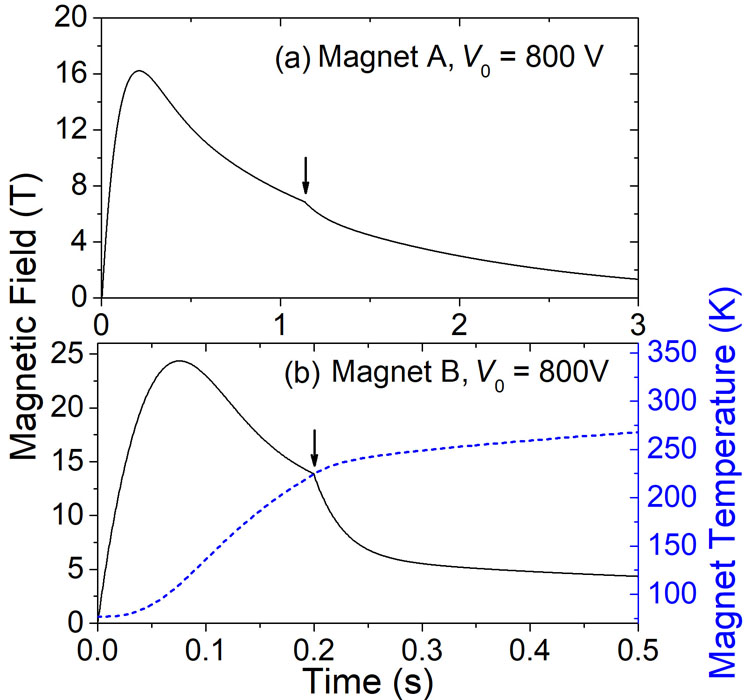Generation of Long Pulsed-Magnetic Fields by Using Electric-Double-Layer-Capacitors
Kohama Group
The generation of pulsed magnetic fields was first achieved by Pyotr L. Kapitsa approximately a century ago. After his pioneering work, various power supplies were tested for pulsed field generation. The most common power supply for generating a pulsed magnetic field is the high-voltage and high-speed capacitor bank. However, such a capacitor bank has small value of capacitance (C = 1 – 100 mF) and consequently restricts the available range of pulsed duration up to ~0.1 s. The short pulse duration makes it difficult to put pulsed magnets to widespread use. Developing an alternative power supply for generating pulsed high magnetic fields is a demanding task in high magnetic field science.
In this study, we have reported a power supply based on an electric-double-layer-capacitor (EDLC) which is composed of a series connection of 336 EDLC cells [1]. This system has a total capacitance of 10.7 F and can store the energy of 3.87 MJ with the charged voltage of 860 V. We find that the EDLC based power supply can generate high magnetic field up to 30 T with pulse duration of ~1 s. Because of the low-cost and compact design of developed EDLC based power supply, our system can be used in many research and industrial fields.
Figure 1a and b show the pulsed field profiles generated by our EDLC system. The arrows in Fig. 1 indicates the timing of the closing an energy bifurcation thyristor, which leads to an intentional reduction of the pulsed current. Due to the large capacitance of EDLC bank, we could observe the overdamped-like waveform for the setup A (Fig. 1a), which has long pulse duration of ~ a few seconds. The peak values of the fields (currents) are 16.2 T and 23.9 T (5.91 kA and 4.39 kA) for setup A and setup B (Fig.1b). The peaks of the fields shift to later times with decreasing charged voltage and indicate the strong influence of Joule heating on the pulsed field profile. Indeed, the calculated temperature of the pulsed magnet as shown in the right axes in Fig. 1(b) clearly shows the large Joule heating effect. In the paper, we have also reported how the pulsed field profile is influenced by the capacitance, internal resistance, coil resistance, charged voltage, coil inductance (not shown in this material) and found that a suitable choice of the coil design could increase accessible field strength up to 30 T and enhance pulsed duration up to a few seconds.
In summary, we have developed the EDLC based power supply which is cost-effective and compact discharge system and can generate strong magnetic fields with long duration. These systems can be used for many research fields such as nuclear magnetic resonance and neutron scattering experiments, which typically require long accumulation times to achieve good signal/noise ratios. In addition, we have confirmed that the generated pulsed field profile is well described by a series-connected RLC model with taking Joule heating into account. Finally, we note that connecting several EDLC units in parallel and series can generate a strong pulsed field of more than 30 T with a long time duration of a few seconds.
References
- [1] K. Matsui, T. Kanda, Y. Ihara, K. Kindo, and Y. Kohama, Rev. Sci. Instrum. 92, 024711 (2021).

